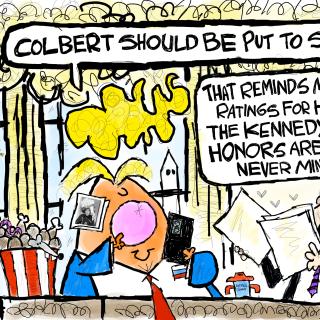Advertisement
Surely one of the most shocking murders of the modern day freedom movement was that of Emmett Till in Money, Mississippi, on August 28, 1955. The fourteen-year-old Chicago native was engaging in a time-honored tradition in the black, northern, urban community: he was sent down south to visit relatives during his summer break from school. Emmett’s mother, Mamie Till, had warned him that there was a great difference between Chicago and Money. She cautioned him to stay away from whites, but to show them extreme deference if he had to interact with them. Till left Chicago a fresh, chubby cheeked teenager and returned a grotesque corpse in a pine box.
My late mother once told me that every parent’s nightmare is that of consigning a child to the grave; it’s against the natural order of things. Emmett was Mamie Till’s only child, and even though she remarried, she never had another. She outlived her beloved Emmett by forty-eight years. Yet she never stopped looking and fighting for justice, and she refused to hate. At the time of her death in 2003, Mrs. Till-Mobley was coauthoring a book, Death of Innocence: The Story of the Hate Crime That Changed America. It was published posthumously later that year.
Mrs. Till made the incredibly courageous decision to have an open-casket funeral for Emmett. “I wanted the world to see what they did to my baby,” she explained. Till’s badly mutilated body–he had been severely beaten and shot, and his body was in the river for several days before it was discovered–shone an international spotlight on the abysmal record of Mississippi’s treatment of blacks. No longer could Mississippi remain the closed society, and no longer could America turn its back on the vile racism in the south.
Carolyn Bryant, the white woman who accused Till of asking her for a date, grabbing her around the waist and telling her he had sex with other white woman, admitted ten years ago to Timothy Tyson, a Duke University senior research scholar who was writing a book about the terrible murder, that she had made up the more sensational bits to which she had testified so long ago. Until then, Bryant had never spoken to anyone about the murder. Even when the FBI reopened the case decades later, she refused to cooperate. But she was old, the last survivor connected to the incident, and writing her memoirs. She knew that Tyson had written a book on another racial murder in the south; she thought him the right person to whom she could open up. (The Blood of Emmett Till was published by Simon and Schuster earlier this year.) Yet when pressed to clarify what happened, Bryant claims to have forgotten. However, she did tell Tyson “Nothing that boy did could ever justify what happened to him.” Bryant, as a mother who had later in life also lost a son, claimed that she felt “tender sorrow” for Mamie Till. And while Mamie Till repeatedly said she would welcome the chance to talk to Bryant mother to mother, Bryant refused to do so. Her unpublished memoir is in the Southern Historical Collection at the Chapel Hill branch of the University of North Carolina. It will not be available for almost twenty years, and once again, Bryant has retreated back into silence, her very whereabouts unknown.
Even though there have been a number of books, several documentaries, a play, a song, and poetry about the death of young Till, one person has been missing from this story: Louis Till, Emmett’s father. It is he who is the subject of John Edgar Wideman’s latest book, Writing to Save a Life: The Louis Till File. Wideman, a much honored and prolific author, was drawn to this project for several reasons: he and Emmett Till were the same age, Wideman’s father was also a soldier during World War II, and both boys had felt estranged from their fathers.
Louis Till had been executed–“judicial asphyxiation” it was noted in his file–after a military trial during which he and several other black men were accused and found guilty of the rape and murder of an Italian–read white–woman. This was a little known fact, yet somehow the elder Till’s confidential military file was made known to the press after Roy Bryant and J. W. Milam were acquitted of Till’s murder, and while authorities were trying to decide if they should be charged with kidnapping. They escaped being indicted for that, and it’s no doubt that Louis Till’s execution for the alleged crime of raping and murdering a white woman was instrumental in that decision. All whites in Money needed to do was connect the dots. Like father, like son. Louis Till is victimized a second time in the murder of young Emmett.
Using facts, imagination, allegory and fiction, Wideman tells the story of race in America by telling Louis Till’s story. However, as someone who rarely reads literature or fiction and has very little knowledge about the craft of either method, I found the book somewhat puzzling in spots. Moreover, the lack of punctuation in many places, especially question marks, just about drove me crazy. Wideman’s unusual methods work, however, because he has excelled in his use of context; i.e., the historian’s method of looking at time, place and circumstances to tease out what happened before and why. His brilliant use of context allowed me to overlook unfamiliar literary devices and bad punctuation, and connect with Louis Till.
Wideman also traveled to France to visit Louis Till’s grave. It is located way in the back in a section of a cemetery used for soldiers who have been judicially executed by the military, and bears only Till’s identification number. Of the ninety-six graves in this section of the cemetery, eighty-three of them contain the remains of black soldiers.
When I finished the book, I finally understood the title. Writing to Save a Life rescued Louis Till’s life from the dustbin of history.



